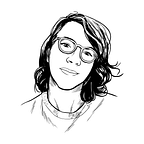Smells like teen spirits: The surprising origin of SXSW
How a teenage booze prohibition gave us America’s trendiest festival
By Meagan Day
At this year’s South by Southwest (SXSW) in Austin, people chew on freely distributed Go Cubes — caffeinated gummy candies — as they kill time between talks with titles like “Brand Strategy” and “Event Solutions”.
SXSW has become a tech conference with music. The organizers of the first SXSW festival could never have predicted the sheer volume of wearable tech at an event designed to recover lost revenue from teen drinking.
You heard that right: SXSW was started to help out local bars and clubs after the law on teenage alcohol consumption changed. “When the legal drinking age in Texas rose to 21 in 1986,” writes sociologist Jonathan Wynn, “it took a significant revenue stream away from music venues, stirring concerns over how to nurture the city’s small but vibrant music scene.”
The year before, a group called the Austin Music Advisory Committee (AMAC) had formed to address what they saw as the city government’s indifference to its vital music industry. AMAC, which consisted of local musicians, critics, venue owners and record industry workers, compiled a white paper called “Austin Music: Into the Future.” The report recommended that Austin change its slogan to “The Live Music Capital of the World” and organize an annual music festival.
The Austin Chamber of Commerce heard them out, but wasn’t sold on their suggestions. That is, until the 1986 drinking age hike put a dent in local music venues’ revenue and a hole in local musicians’ pockets. After all, Austin’s a college town, and most college students are under 21.
When the law went into effect, AMAC became even more vocal. A musician named Troupe Earnest Gammage III — who had played in a band called The Sweetarts with local alt-country music icon Townes Van Zandt — led the charge. He started negotiations with the city, and finally got them to accept the report’s suggestions. Gammage was instrumental in the hybrid conference-festival idea: He wanted to not only showcase Austin musicians and labels, but teach them how to thrive. The first seminars were primers for local artists on basic banking, taxes and legal issues.
The inaugural SXSW happened in 1987. The festival sold only 700 tickets at $10 to $15 a pop. The lineup was Texan through and through: cosmic cowboys from West Texas, Chicano punk from San Antonio, Dallas psychobilly and Austin slacker rock. The keynote speaker was Huey Meaux, aka The Crazy Cajun, a record producer from Louisiana.
The Austin Chronicle gave a glowing review: “All in all, an impressive beginning for SXSW and a sturdy groundwork on which to build a balanced conference tradition — level-headed, sober discussion countered with six or seven hours worth of the real live thing.”
Twenty-nine years ago, local country artist Hal Ketchum sang tender tunes from his debut album Threadbare Alibis on the neon-lit stage of the historic Continental Club. This year, attendees can hear about “mobile workout textiles for electro muscle stimulation” in a modern conference center. It’s been a wild ride for SXSW. And none of it would have happened without the teenage booze ban of ’86.
